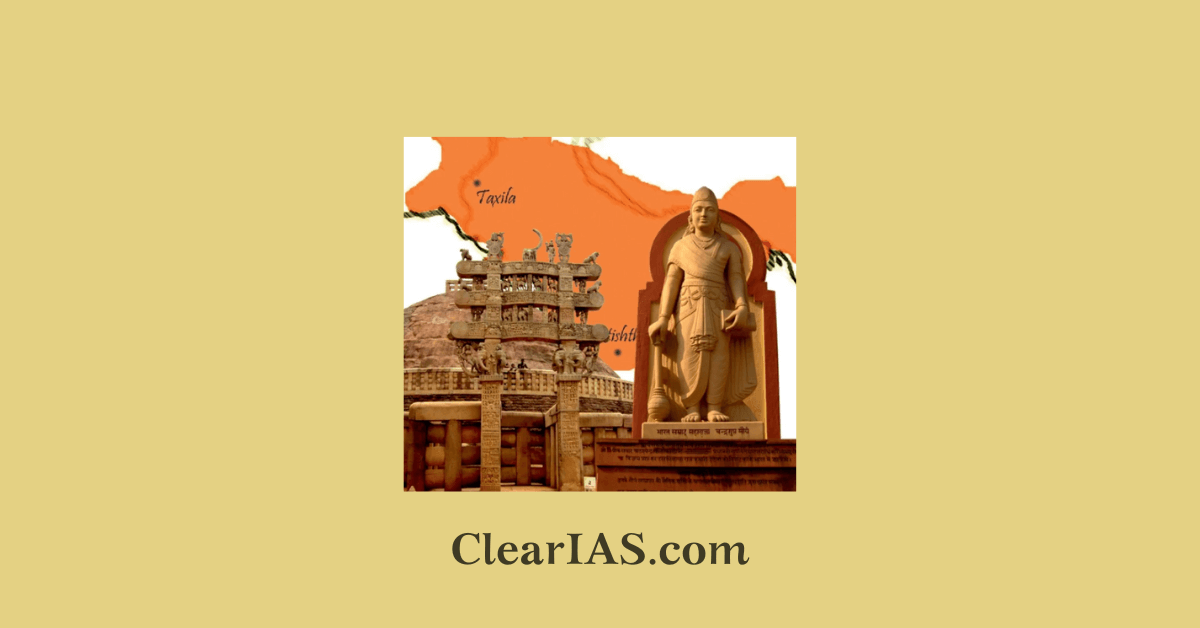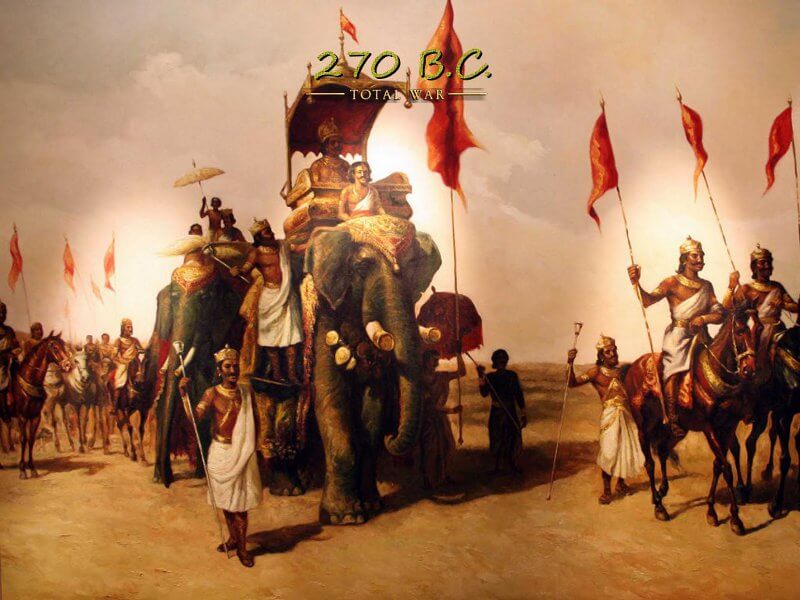
The Officers of the Mauryan Empire were part of a well-organized administrative structure with officials who played key roles in governing the vast empire. The empire existed in ancient India from approximately 322 BCE to 185 BCE. Read further for the easy-to-learn compilation of officers of the Mauryan empire.
The Mauryan Empire was founded by Chandragupta Maurya but reached its zenith under Ashoka.
The Mauryan empire (322 BC – 185 BC) was the largest to have ever existed in the Indian subcontinent, spanning over 5 million square kilometers.
In this post, we are compiling the names and functions of the officers during the Mauryan Period.
Officers of the Mauryan Empire

Name |
Function |
Mantrin |
Chief Minister |
Mantriparishad Adhyaksha |
Head of Council of Ministers |
Purohita |
Chief Priest |
Senapati |
Commander-in-chief |
Yuvaraj |
Crown Prince |
Samaharta |
Revenue collector |
Yukta |
Subordinate revenue officer |
Shulkadhyaksha |
Officer-in-charge of royal income |
Prashasti |
Prison head |
Sannidata |
Treasury head |
Koshadhyaksha |
Treasury officer |
Koshthagaradhyaksha |
Royal treasury manager |
Nayaka |
City Security chief |
Vyabharika |
Chief Judge |
Karmantika |
Head of Industries & Factories |
Dandapala |
Head of Police |
Durgapala |
Head of Royal Fort |
Annapala |
Head of Food Grains Department |
Rajjukas |
Land measurer |
Pradeshika |
District administrator |
Akaradhyaksha |
Mining Officer |
Lauhadhyaksha |
Metallurgy Officer |
Lakshanadhyaksha |
Coin minting |
Lavanadhyaksha |
Officer of the salt department |
Swarnadhyaksha |
Officer of the gold department |
Ayudhadhyaksha |
Weapon manufacturing & defence department. |
Kunyadhyaksha |
Officer of the forest. |
Panyadhyaksha |
Office of Commerce department |
Manadhyaksha |
Office of Time & place determining |
Sunadhyaksha |
Slaughter-house officer |
Mudradhyaksha |
Royal symbol, coin, etc. |
Dyutadhyaksha |
Gambling department |
Naukadhyaksha |
Shipping department officer. |
Pattanadhyaksha |
Officer of Port. |
Role of the Officers in detail
- Emperor (Samrat): The emperor was the supreme authority and the head of the Mauryan administration. Chandragupta Maurya, Bindusara, and Ashoka were the notable emperors of the dynasty.
- Mahamatra (Chief Minister): The Mahamatra, also known as the Prime Minister, was the second most powerful official in the empire after the emperor. Chanakya, also known as Kautilya, served as the chief minister during Chandragupta Maurya’s reign.
- Yukta (Revenue Officer): Yuktas were responsible for revenue collection and land administration. They assessed taxes and managed land records.
- Rajukas (Superintendents of Revenue): Rajukas were officials responsible for overseeing revenue collection in specific regions of the empire.
- Dharmamahamatra (Chief Justice): The Dharmamahamatra was responsible for upholding justice and ensuring the rule of law. Ashoka appointed Dharma officers to promote ethical and moral conduct among the people.
- Senapati (Commander-in-Chief): The Senapati was the head of the military and played a crucial role in the defense and expansion of the empire. Chandragupta Maurya’s general, Chanakya, also held this position at times.
- Adhyaksha (Chief of Police): The Adhyaksha was in charge of maintaining law and order, and they oversaw the police force.
- Maharatha (Superintendent of Chariots): This official supervised the royal chariots and the cavalry.
- Agronomists and Foresters: These officers were responsible for agricultural planning and forestry management, ensuring the sustainable use of natural resources.
- Dharmamahamatras (Officials for Moral and Ethical Matters): These officials were appointed by Ashoka to promote moral and ethical conduct among the people and to oversee religious and social activities.
- Pradeshikas and Pradesha Adhyakshas: These were regional officers responsible for administering specific provinces or territories within the empire.
- Sannidhata (Chief Treasury Officer): The Sannidhata was responsible for the treasury and the management of financial resources.
- Purohita (Chief Priest): The Purohita was the chief priest responsible for performing religious ceremonies and rituals on behalf of the emperor.
- Amatyas (Ministers): The Amatyas were advisers to the emperor and held various administrative positions within the empire. They assisted in policy-making and governance.
- Dharmadhyakshas (Religious Officers): These officers were responsible for promoting religious tolerance and harmony among the diverse religious communities in the empire.
Conclusion
The Mauryan administration was characterized by its efficient bureaucracy and well-organized administrative divisions. Chandragupta Maurya and Ashoka, in particular, implemented administrative reforms and policies that contributed to the stability and prosperity of the empire during their reigns.
Compare, Connect and Learn Faster: Indian Political History:
- Officers of the Mughal Empire: Easy to Learn Compilation
- Officers of the Delhi Sultanate: Easy to Learn Compilation
- Officers of the Gupta Empire: Easy to Learn Compilation
- Officers of the Mauryan Empire: Easy to Learn Compilation
- Officers during the Vedic Period: Easy-to-Learn Compilation
Compiled by: Jishnu J Raju






Thanx for giving this information it is really very informative
Superb
Excellent
Really helpful but name the village officers during the Mauryan Period I required to know this too
The village was headed by GRAMINI and his eleder councillors (elders) and the villages were not very deeply organised as was the case with Janapadas
The village was headed by GRAMINI and his eleder councillors (elders) and the villages were not very deeply organised as was the case with Janapadas
cool
Was the salary paid in cash to the officers?
This is undoubtedly the best thing that I’ve come across today in the internet. It was a long time that I have been thinking on this topic but I couldn’t satiate my quench for knowledge through any post that I read. However, today that I came across your article, I seem to have learnt a lot and I have also gained enough knowledge on this topic. Thanks once again.
https://www.justwebworld.com/chandragupta-maurya/
Very useful
Market officer?